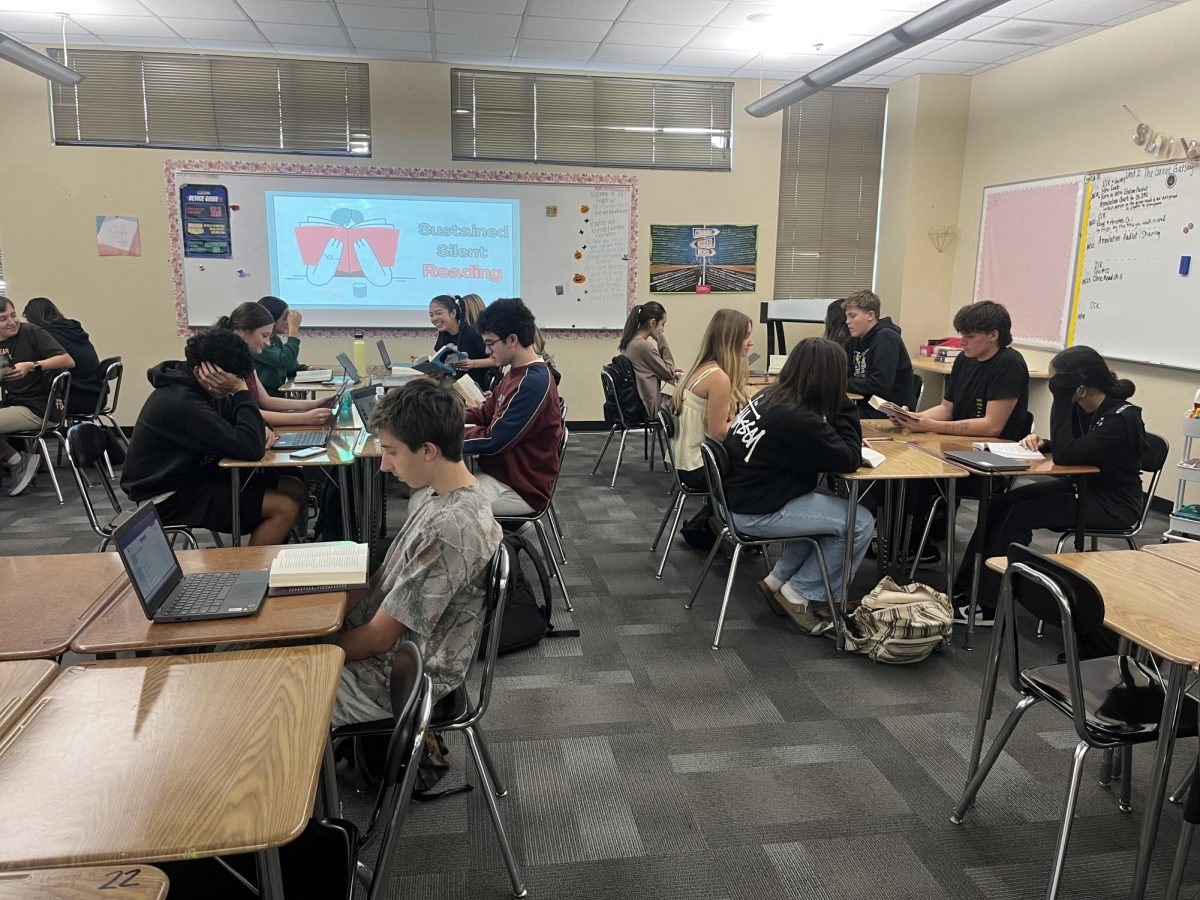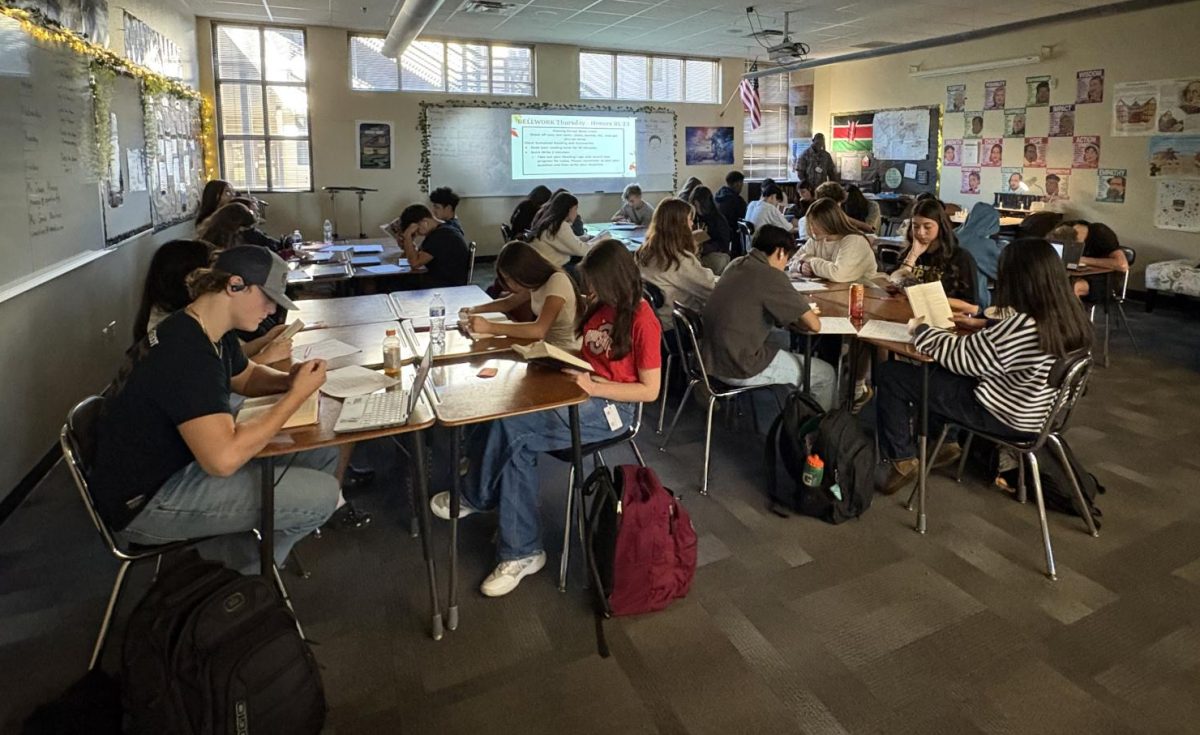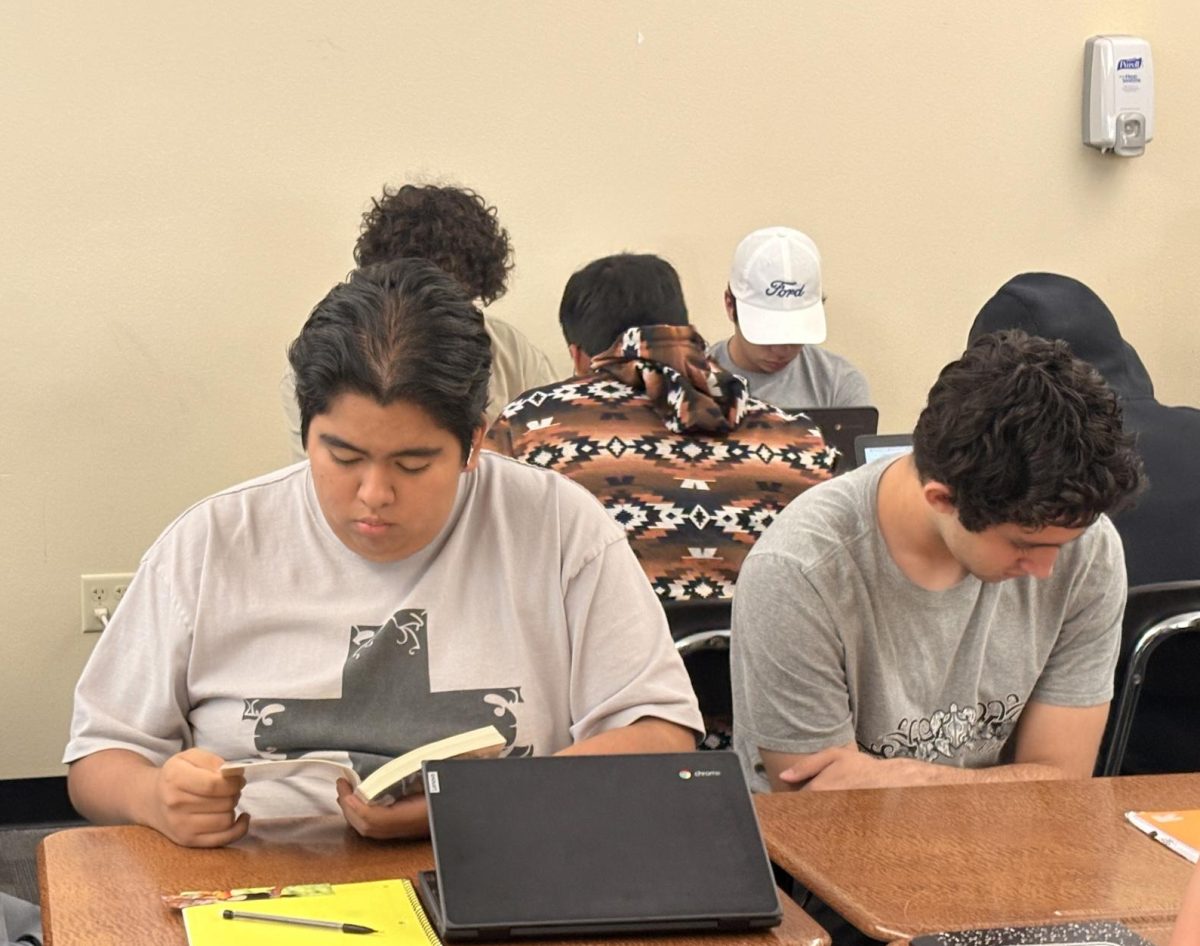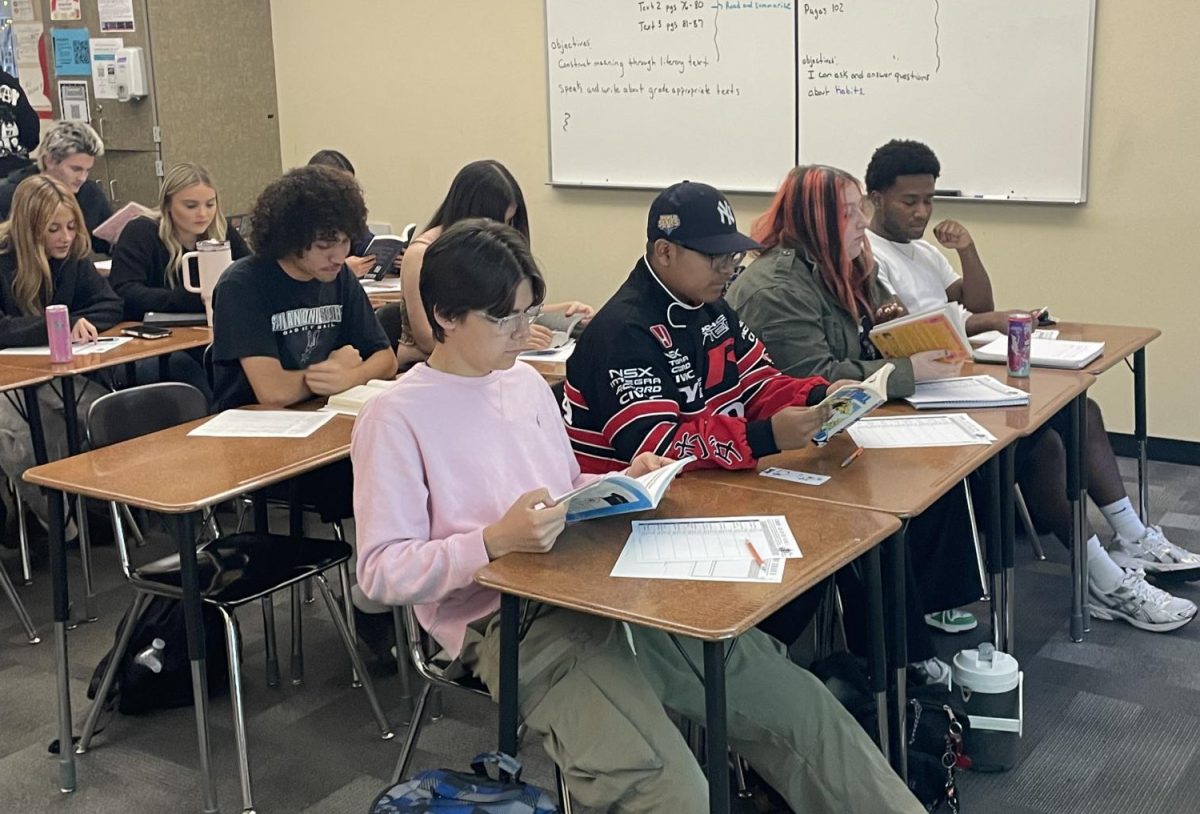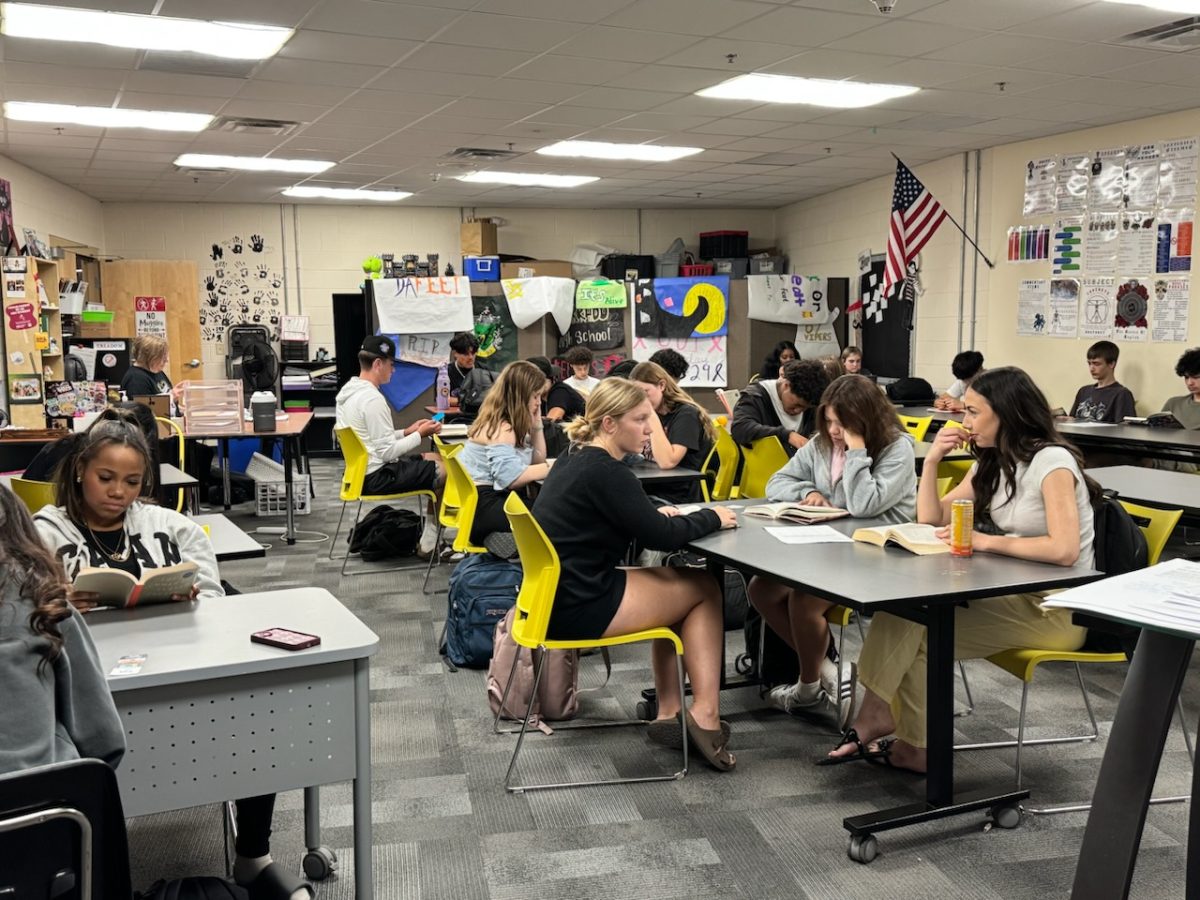Reading Scores Spark Change at Agua Fria Union High School District
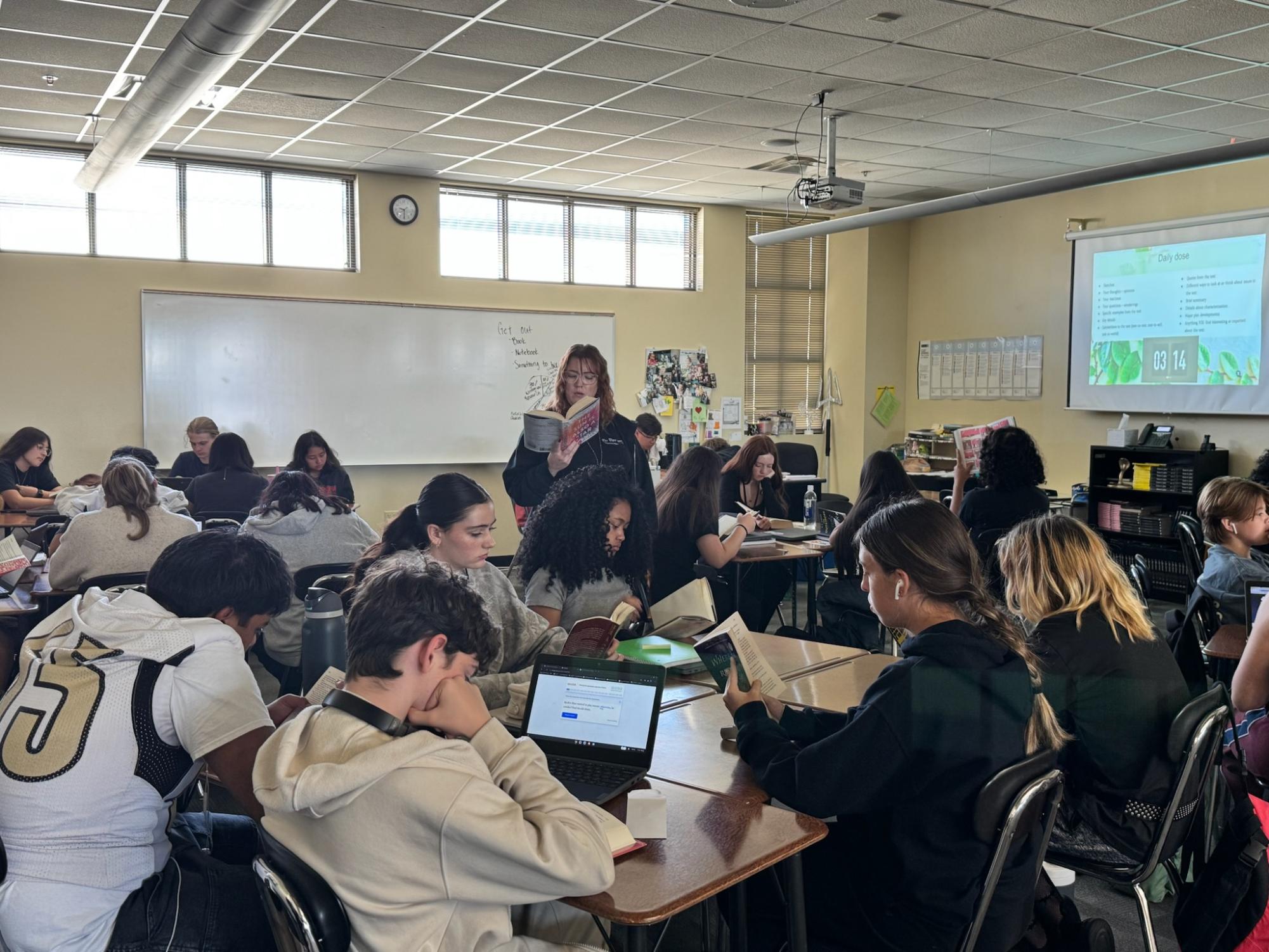
Reading scores in the United States have been at their lowest they have ever been, leaving many educators concerned. According to the National Assessment Governing Board, reading scores all over the states have been on a decline since before the pandemic in 2020.
Educators and experts suggest that it could be due to multiple factors. One of those is technology. While tools such as ChatGPT can help students, many often rely on it for quick answers instead of actually learning. This problem could weaken skills like critical thinking and comprehension.
A lack of interest in reading can definitely affect reading test scores. One of the main reasons for this is social media with little to no things to read and many different shortenings of words, people use these skills much less, leading to a slow loss of use for reading and writing literacy.
Curriculum Specialist at Agua Fria High School District, Amanda Barnes believes, “What it takes to practice it may be more high interest texts in the library, the ability for [teacher] Professional Learning Communities to adjust pacing to make space for choice reading, etc. most importantly, though, I think it’s keeping up the support and encouragement for teachers and students.”
In order to solve the problem of low reading proficiency, many schools have shifted their focus to a literary initiative, which will slowly bring reading back and foster a love of reading, allowing students ten minutes during their English class to read something that they find interesting.
AP and English III teacher at Verrado, Demetrius Howard, agrees something needs to change when it comes to content teens consume: “ I believe social media and smartphones are overstimulating when students are exposed to multiple forms of content information after every scroll, causing the brain to be overloaded with information. Without the structure of processing or researching the information, and the ability to put it into practice, I believe students can be socially, emotionally, and academically bankrupt.”
A lifelong love of reading begins when students are given the freedom to choose the stories that spark their curiosity and reflect their lives, rather than being confined to strictly leveled or prescriptive texts. When reading is built into the rhythm of a classroom or a home, not as just a homework task but as something shared, celebrated, and discussed, it transforms.
Rachel Diehl, an English IV teacher at Verrado, agrees: “I am very pleased with the things I’ve seen this year, students are actually reading books that they like reading instead of pulling out a phone and looking at it instead.”
The belief that inspired change at the district level is simple: We flourish as readers when we talk about books, when we see ourselves in their pages, when we are given time during the day to quietly immerse ourselves in a chosen title, and when adults model reading as a meaningful, enjoyable activity. We need to give students the opportunity to explore novels by authors who may inspire them. By honoring students’ interests, cultures, and languages, and by creating a space where reading isn’t just required but embraced, we lay the foundation for not just stronger literacy skills, but richer lives filled with curiosity, connection, and the joy of turning page after page.
In recent years, a troubling reality has emerged: reading scores across the United States are steadily declining, with Arizona falling to a disheartening 51st place on the Education Recovery Scorecard for reading performance. This is particularly alarming because the state’s reading scores are not only lower, but also dropping at a rapidly increasing rate. These declines are not just statistics, they represent the real impact on students’ learning and futures.
Rachel Diehl teaches English IV at Verrado. She believes that we are actually making real strides in improving the reading scores of kids in our district. “The Literacy Initiative we have undertaken is going to have an impact. All students are reading in their English classes. Students are writing more in the English classes. This addresses one of the major issues our students have when it comes to reading, and that is reading stamina. It is hard for anyone to read long, boring passages about topics they don’t care about and then answer questions about them. Having students read books that they want to read for ten minutes a day is going to help with that stamina issue. ”
The Education Recovery Scorecard is a tool developed to assess and track how well U.S. states are recovering from the academic setbacks caused by the COVID-19 pandemic. It evaluates key areas of education, such as reading and math scores, student engagement, and overall academic progress. The scorecard highlights disparities between states and provides a clear snapshot of how different regions are responding to learning losses and implementing recovery efforts. By ranking states on these metrics, the Education Recovery Scorecard serves as both a measure of success and a call to action, encouraging states to invest more in their education systems and focus on closing achievement gaps that have widened due to the pandemic’s disruptions.
Recent test results show that fewer students are reading at grade level than even just five years ago. While many might assume reading struggles are confined to younger students, the problem spans all grade levels.
Verrado Senior, Casey McCorry, explains,
The attention span of many Americans has lowered dramatically over the last couple of years which decreases peoples desire to pick up a book and read.”
Teachers and parents alike are raising alarms because a lack of strong reading skills doesn’t just affect a student’s ability to read, it compounds across all subjects. In subjects like science, history, and even math, reading proficiency is foundational. Without the ability to read and comprehend texts, students find it increasingly difficult to grasp complex concepts in any subject. It’s like trying to build a house without a solid foundation: eventually, everything else begins to crumble.
There are a few reasons this is happening:
First is the COVID-19 pandemic. When schools shut down worldwide and switched to online learning, a lot of kids struggled and weren’t getting the same support they usually would. Staring at their screens all day and having other distractions around them while being stuck inside all day isn’t the same as a teacher being right there to help you.
Another problem is that Arizona has had teacher shortages for years. When there aren’t enough teachers, classrooms get bigger, and it’s harder for students to get individualized attention. Reading is a skill where learning one-on-one really helps, especially with younger students. If kids don’t get that support early on, it’s more likely they’ll struggle in their middle and high school years.
Senior, MacKenna Clark, at Verrado has a different idea, “I think many students don’t like to read because they haven’t found maybe the right genre for them and so they can’t get into the book they are reading but I also think the pandemic has to play into it.”
It is also possible that technology and social media play a role. A lot of kids nowadays spend a lot more time scrolling through TikTok or Instagram than they do reading books. While watching videos can be entertaining, they don’t build the same vocabulary and comprehension skills that actual reading does.
Clark agrees, “I think kids nowadays are so used to internet and it being so stimulating and getting such high dosages of dopamine that stuff like reading is probably too unstimulating for them to care to read.”
Arizona’s drop in reading scores is definitely a wake up call. It shows how much work still needs to be done to make sure students don’t fall through the cracks. Reading might not seem exciting to everyone, but it is the foundation for success in school and in life.
As the educational landscape evolves, VHS senior English classes are adapting to meet the demands of both academic achievement and personal growth.
One recent development that has gained traction is the incorporation of Sustained Silent Reading (SSR) into the curriculum.
SSR is a designated period during which students read silently for a sustained amount of time, allowing them to engage with literature on a more personal level and enhance their reading skills.
“Sustained silent reading has allowed both teachers and students to grow in real time, from passive participants to engaged enjoyers of the things they care about. The best part is that students get to see themselves progress forward every day. Sometimes, all we need is just one thing in our lives to be moving forward to keep us going,” says Yesinia Moreno, an English IV teacher at Verrado.
This shift towards SSR reflects a broader understanding of the importance of reading in its many forms, beyond the traditional textbook or assigned novel.
For seniors, many of whom are preparing for college or entering the workforce, Senior English is often seen as the final opportunity to refine their reading and writing skills.
The introduction of SSR is designed not only to promote lifelong reading habits but also to encourage self-directed learning.
By giving students the freedom to choose their own reading materials, SSR creates a sense of independence and responsibility for their learning.
One of the core benefits of SSR is its ability to improve reading fluency and comprehension. Research consistently shows that the more students read, the better their vocabulary, writing, and critical thinking skills become.
SSR provides the time and space for students to practice these skills daily, helping them become more confident readers.
Additionally, as students engage with different types of texts, they are exposed to various writing styles and perspectives, broadening their understanding of language and literature. This also helps those taking AP Literature for their test in May.
Rachel Diehl agrees: “One thing we still need to do is incorporate more reading into all of the other classes. English teachers should not be the only ones having the students read. I am not saying that math classes need to set aside 10 minutes a day for silent reading, but students should be independently reading material that is relevant in their classes.”
Beyond academic benefits, SSR is also a tool for enhancing mental well being. In an age of constant digital distractions, reading offers students a break from the pressures of social media and technology.
This mental break can also improve focus in other academic areas, making SSR a valuable addition to a senior English curriculum.
By promoting self-selected reading, improving academic skills, and encouraging personal reflection, the integration of Sustained Silent Reading is helping Verrado’s Senior English classes become more dynamic and proficient in reading comprehension.
As juniors step into their third year of high school and their third year of English class, there’s more at stake than just moving on to English III or possibly an AP option. In Arizona especially, reading proficiency is hitting a critical point and that makes all these English classes, choices and all, seriously important.
n 2024, eighth-grade students in Arizona scored an average of 254 on the National Assessment of Educational Progress (NAEP) reading test which is slightly below the national average of 257. Even more alarming: Arizona’s reading achievement has slipped since 2022, and students are now around 0.58 of a grade level behind compared to pre-pandemic levels in reading.
In other words: Many students are not entering junior year with reading skills where everyone hoped.
Every class requires reading so whether you’re in English III or taking an AP class, you’ll be reading novels, speeches, essays, and doing writing that expects you to understand what you’re reading. If your reading isn’t strong, the fight for grades gets harder.
“In my experience, I have seen a tremendous decline in student reading and comprehension. The use of AI, social media, and smartphones are contributing factors. When students constantly use AI, I believe it dulls their critical thinking skills, not allowing them the ability to think independently beyond technology.” Demetrius Howard, Verrado AP and English III teacher, sees a concern where skills are lacking due to extensive cellphone use.
His concern is amplied because AP courses raise the bar. AP English Language and Composition and AP English Literature ask you not just to read, but to analyze structure, tone, rhetoric, theme require all higher-order skills. If reading fundamentals are shaky, the jump can feel huge.
Lia Coronado, a junior at Verrado explains reading reluctance and how it can be overcome. “High school students probably don’t like reading because they find it boring and they are more visual people that would rather watch a movie, some people don’t like reading because they haven’t read the right books. In class we are forced to read what the schools make us, it’s more boring about history, they need to have a wider selection for students that way everyone can find something that is for them.”
In Arizona’s current reading landscape, junior year English isn’t just another subject on your schedule, it’s central. Whether you go the standard route or challenge yourself with AP, reading well will be the key that unlocks success. The statistics show one thing clearly: if students fall behind now, it’s harder to catch up later. But for those who use this year to build strong reading habits? You’ll give yourself a leg up.
Across the country, fewer than one in three students are reading at a proficient level, but some schools are fighting back with a surprisingly simple strategy: quiet time.
Through Sustained Silent Reading (SSR), high schools like Verrado are giving teens the chance to pick up books they actually want to read—and it’s starting to change how students feel about reading altogether.
This is significant because reading proficiency is fundamental for academic success. It allows students to understand complex material and enhance cognitive skills (critical thinking and concentration).
Strong reading skills allow all people to communicate, which is so important for everyday life, like reading emails, messages, and contracts. It also allows students to make informed decisions, like comparing prices or understanding job applications.
The higher a student’s ability to read, the better job opportunities students have, increasing wages. Most jobs require reading, whether that’s for safety manuals or schedules, and students who have better reading skills will thrive in life, rather than if their skills were limited.
Reading is also needed to stay informed, which allows people to make more informed decisions when voting, which supports citizens to civically participate. Along with this, reading proficiency is necessary to learn new skills, which is essential when students grow older and have to independently lead their own lives.
That is why low reading proficiency is such a big issue. If students can’t comprehend what they are reading, then they lose communication skills, decision making, their employment, overall learning, their participation in their community, and their own independence.
Reading is so important in students’ lives, and has major effects on their futures.
That is why school districts are desperate to raise these levels to prepare students for their future.
In order to grow reading proficiency, Agua Fria High School English classes dedicate a small section of class time so students can read a book of their choice. This practice is known as Sustained Silence Reading, or SSR.
Sophomore classes have been taking on this new development with full arms.
Mrs. Carlton, a sophomore English teacher at Verrado High School for six years, when asked about how she feels about sustained silent reading, said, “I personally think it’s awesome. I think it’s a great time to spend reading, especially since it’s a student choice book, not a teacher assigned book, which opens up the doors to actually engaging in the text. It speaks to each student.”
When asked about the end of the year tests, she says, “I think it’s going to help reading endurance, so that they don’t get too tired. Especially when the sophomores move up to junior year, when they will be reading more boring texts, and they only have a little bit of time, they will have the reading endurance to get through it and understand and comprehend what they are reading.”
Along with trying to prepare students for upcoming tests, schools are desperate to find a way to raise student reading proficiency levels.
The goal of the program is to increase student vocabulary and comprehension, which has been declining since 2019, and give students a love for reading on their own in order to build good reading habits.
Avie Groseth, a sophomore at Verrado High School, says, “It makes my friends and me want to read because we get to choose our own book.”
When asked how she feels about the state testing, she says, “It definitely makes me feel more confident that I will be able to get a good score.”
As of right now, we don’t know if SSR will completely solve the problem of declining reading levels, but if students stay focused and use the time given to them, it may solve the issue that America has been facing for years.







